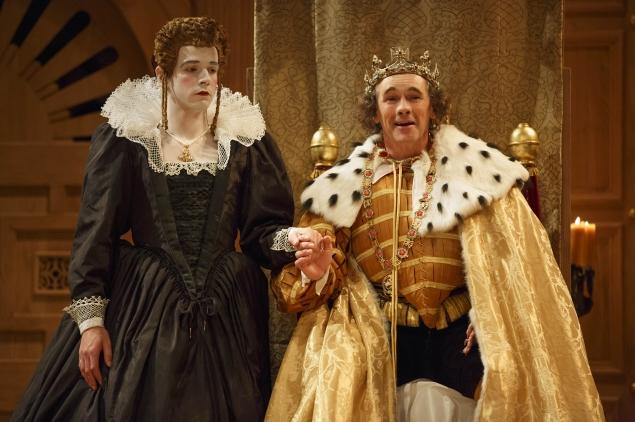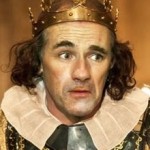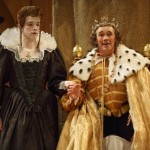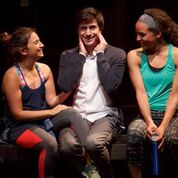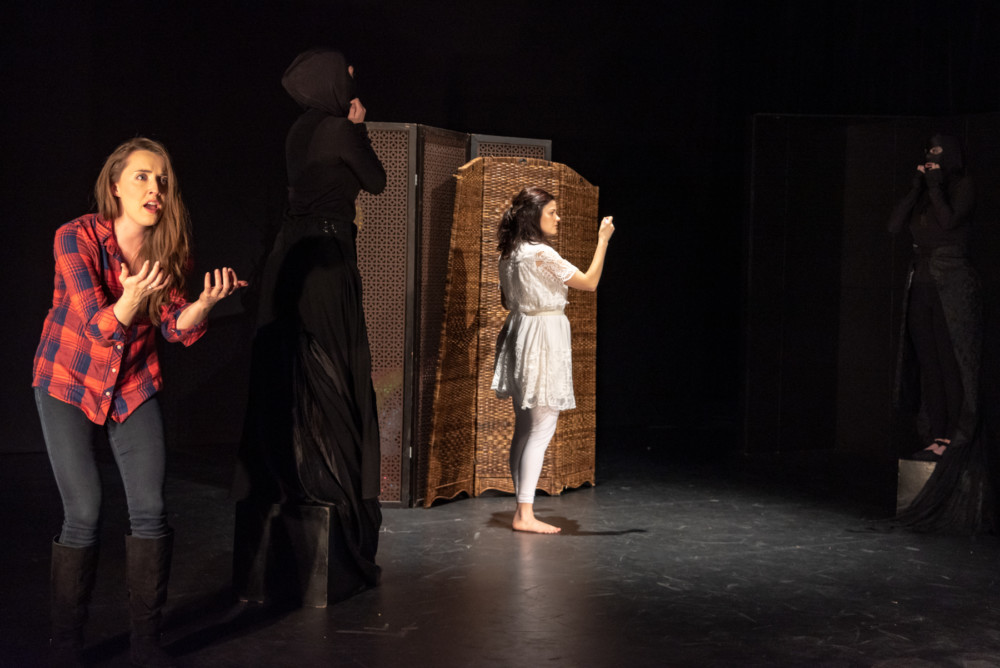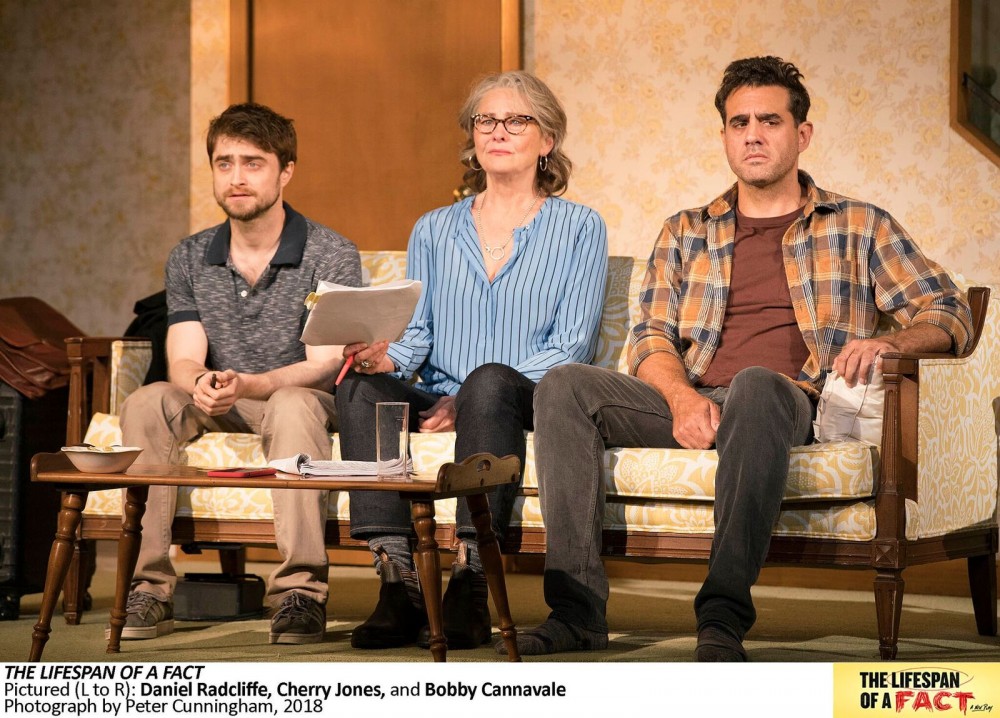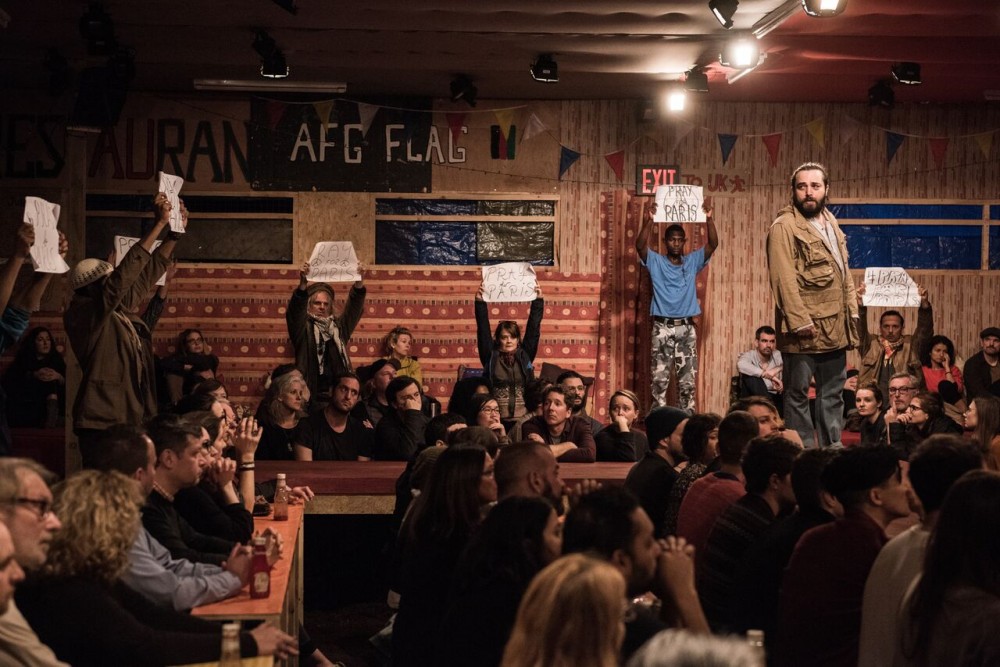by: JK Clarke
When you walk into the Belasco Theater for the Globe’s production of The Tragedie of King Richard the Third, you witness a transformation. Already on stage are the actors, dressing and being made up for the forthcoming play, as well as musicians playing period music. It’s just as it would have been in the early 1600s when the play was first performed. Audience members are there as well, headed to their jury box-like galley seats on the sides of the stage. The experience creates an unexpected intimacy with the actors and the play itself. By curtain time, we are part of the production and have a personal investment in the scenes about to unfold.
Besides Richard III’s most evident themes — greed, sociopathic ruthlessness, and the terrifying politics of power — it is also a play about change, transformation and adaptation. These traits are most evident, brilliantly and revealingly so, in Mark Rylance’s Richard, Duke of Gloucester (and eventual King). During the pre-show costuming session, Richard is jovial and charismatic, chatting with other characters and greeting audience members as they move toward their seats. He seems normal, nice even. And when the play begins, he addresses the audience reflectively, lamenting his career-limiting shortcomings — deformities heretofore unnoticed: “I, that am curtail’d of this fair proportion,/Cheated of feature by dissembling nature . . .” Ah, but there it is: “dissembling.” That is the essence of his being. He may be discussing his unfortunate looks, but the word describes his very character. We hear it again and again. He is a liar. And, as Richard’s myriad plots unravel, his disfigurements, internal and external, begin to reveal themselves. So much so that by the play’s climax we see that one his limbs, heretofore concealed, is shriveled and freakish, more befitting a T-Rex, whose path of violent destruction isn’t terribly dissimilar from Richard’s.
This Richard III is playing in repertory with the Globe’s absolutely astounding Twelfth Night (reviewed here). And while it is a completely different play, with quite another temperament entirely, it does share some commonalities. It, too, features an intimate theatrical setting, complete with a candelabra of 100s of actual candles, on a simple, straightforward stage, providing an austere setting for a very serious and upsetting scenario that unfolds before us. What’s more, like Twelfth Night, the play is performed by an all-male cast; but here, the effect is entirely different. Where in Twelfth Night it added to the intrigue and whimsy of that farce of confusions, here it provides an even more leadened gravity. Evil, evil Richard pounces upon Lady Anne (the expertly vulnerable Joseph Timms) in the midst of her accusing him of killing both the king and her husband, and somehow convinces her to marry him. This is the first of many of Richard’s astonishing seductions which culminate in his bashfully (and dishonestly) attempting to refuse the crown from adoring crowds whom he has also manipulated into imploring him. The only innocent and unseduced in the room are the audience, but Rylance’s Richard wants us to be a guilty part of the game. He smirks, winks and shrugs at us. He gives us his best “I’m a baaaad boy” looks with a peevish grin. Gosh, he’s charming! And now we’re guilty, too. We are part of a series of ghastly murders and a coup d’état, but somehow we’re okay with it.
Rylance may be the featured player in this orgy of murder and greed, but it is the remainder of the cast (who absolutely inhabit every single line of the frequently intricate dialog), the costume designers and Tim Carroll’s superior direction that round out the play. The period perfect costumes and set (by the remarkable Jenny Tiamani), with their odd beer-bellied protrusions (navel codpieces of a sort), the Elizabethan music before and during the show and the Globe-esque setting perfectly augment Richard’s manipulative tale.
Despite his cunning, when he ultimately unravels and folds before his foes we are back on their side and relieved to see him running for his life. It is no wonder, then, that at play’s end, the audience finds itself rhythmically clapping to the music as the players dance on stage in lieu of a curtain call. They are celebrating, with us, the overthrow of a tyrant, an absolutely perfect evening of theater, and a much needed night out.
The Tragedie of King Richard the Third. Through February 2, 2014 at the Belasco Theatre (111 West 44th Street, between 6th and 7th Avenues).www.shakespearebroadway.com


